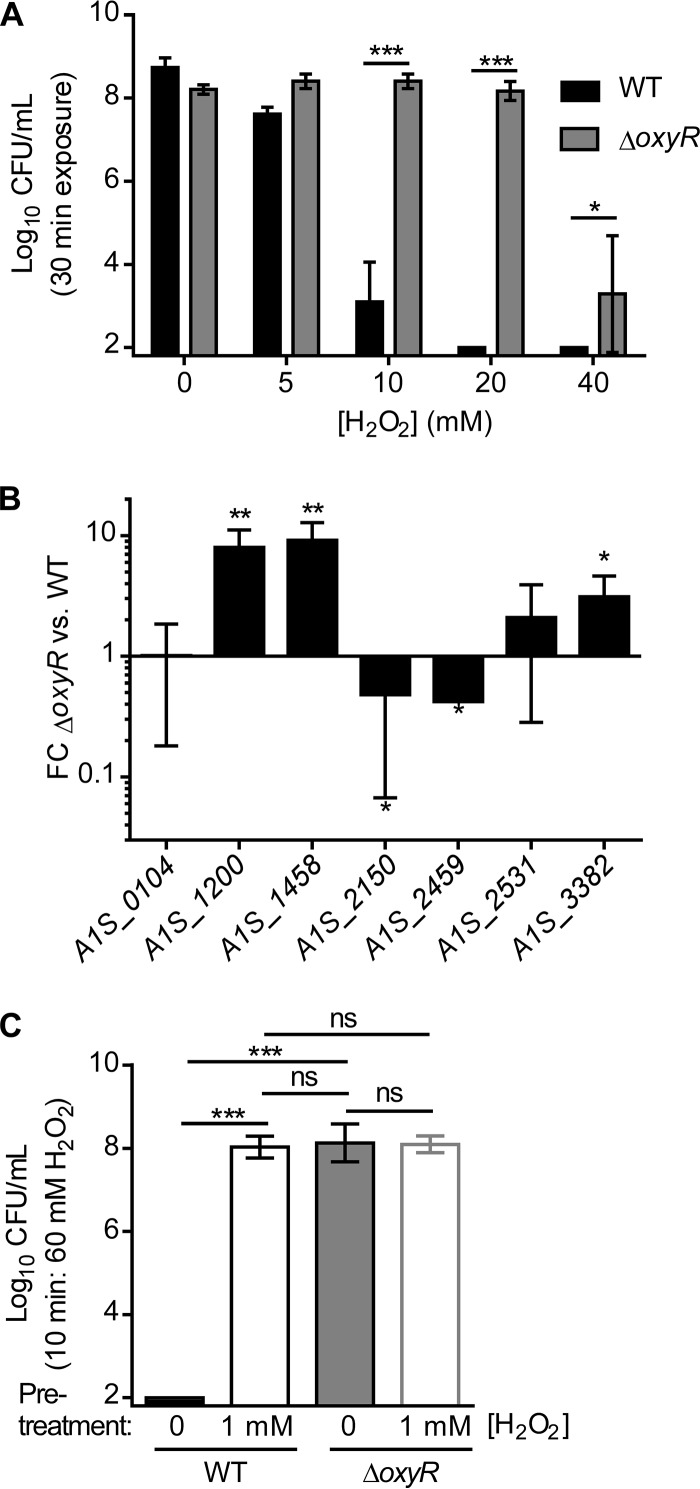FIG 5.
A. baumannii with oxyR inactivated is preadapted to H2O2 stress during exponential growth. (A) Mid-exponential-phase cultures of WT A. baumannii and the ΔoxyR strain were treated with bolus doses of H2O2 at the indicated concentrations for 30 min. CFU enumerated following bolus exposure are shown on a log10 scale. The limit of detection was 2 log10 CFU. Asterisks indicate significant differences (*, P < 0.05; ***, P < 0.001) by t test. Bars indicate means ± standard deviations. (B) qRT-PCR quantification of the relative abundances of H2O2-responsive transcripts in WT A. baumannii and the ΔoxyR strain in LB alone. FC, fold change. Asterisks indicate significant differences (*, P < 0.05; **, P < 0.01) by t test against a theoretical value of 1.0. Six biological replicates were run. Results are means ± standard deviations. For panels A and B, data are from a single experiment performed in biological triplicate and are representative of five independent experiments. (C) Mid-exponential-phase cultures of the A. baumannii WT and ΔoxyR strains were pretreated with 1 mM H2O2 or a vehicle for 30 min. Following pretreatment, cultures were exposed to a bolus of 60 mM H2O2 for 10 min. CFU enumerated following bolus exposure are shown on a log10 scale with the limit of detection at 2 log10 CFU. Asterisks indicate significant differences (*, P < 0.05; ***, P < 0.001) by one-way analysis of variance with Tukey’s multiple-comparison test. ns, no significant difference. Bars indicate means ± standard deviations.

